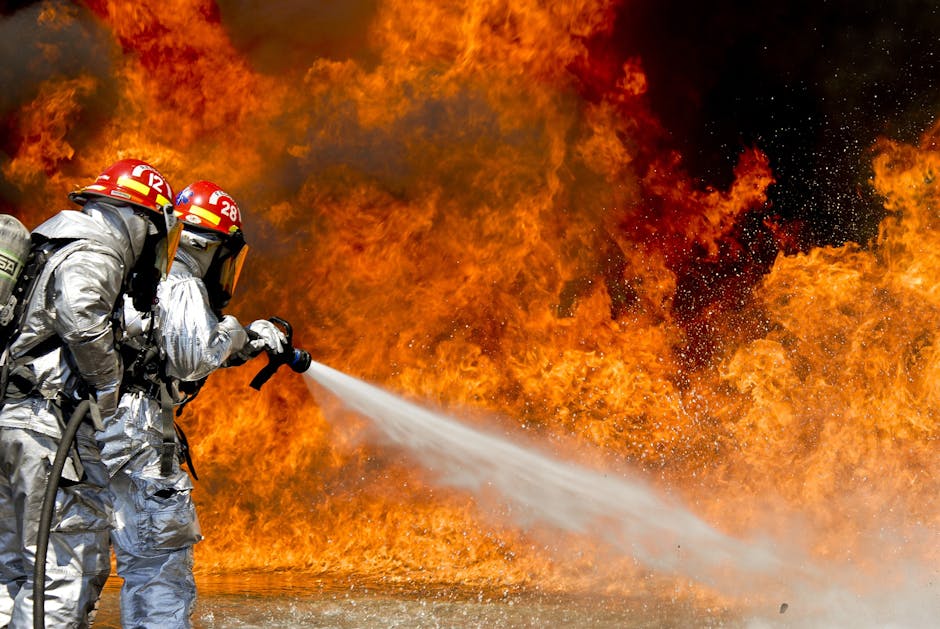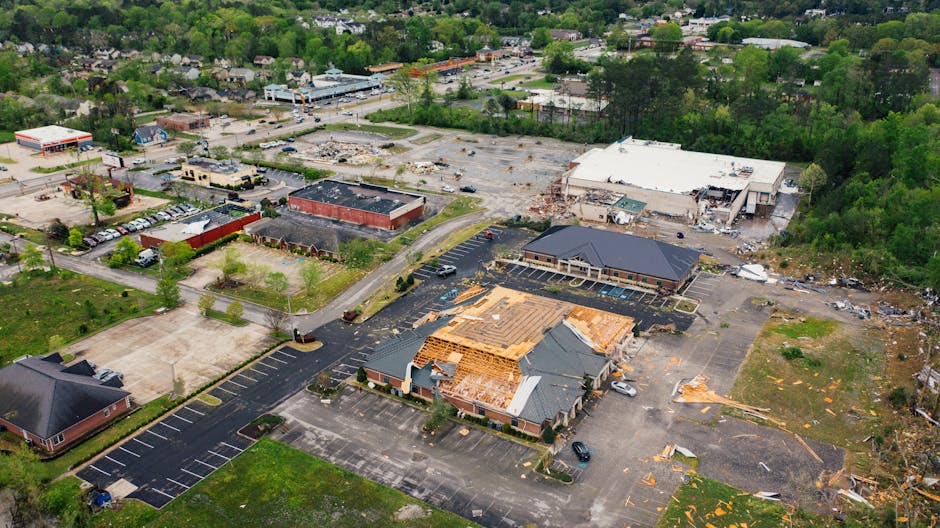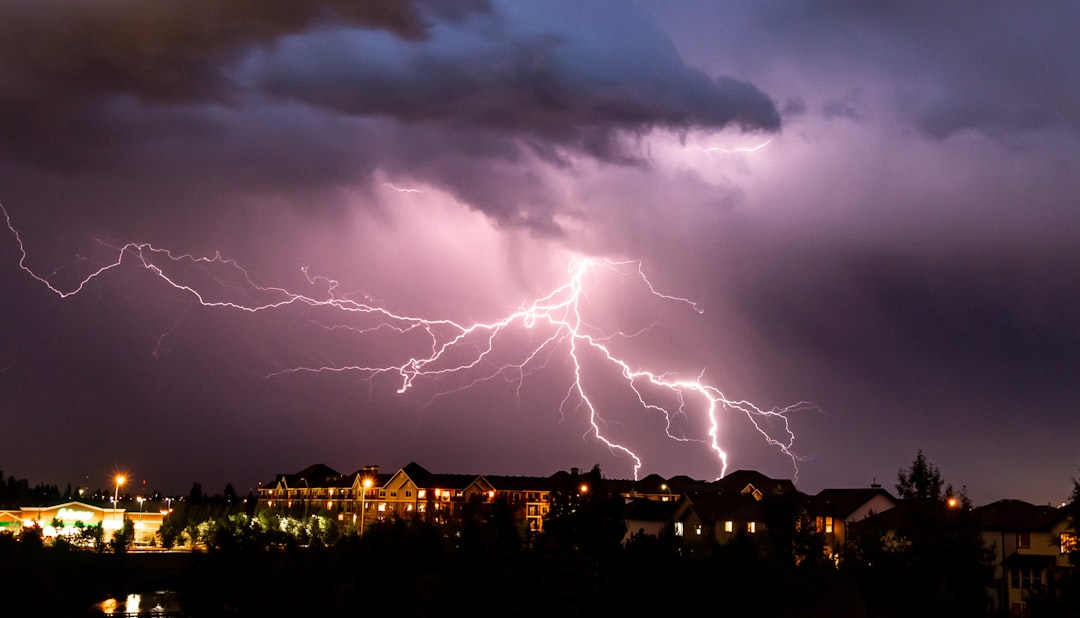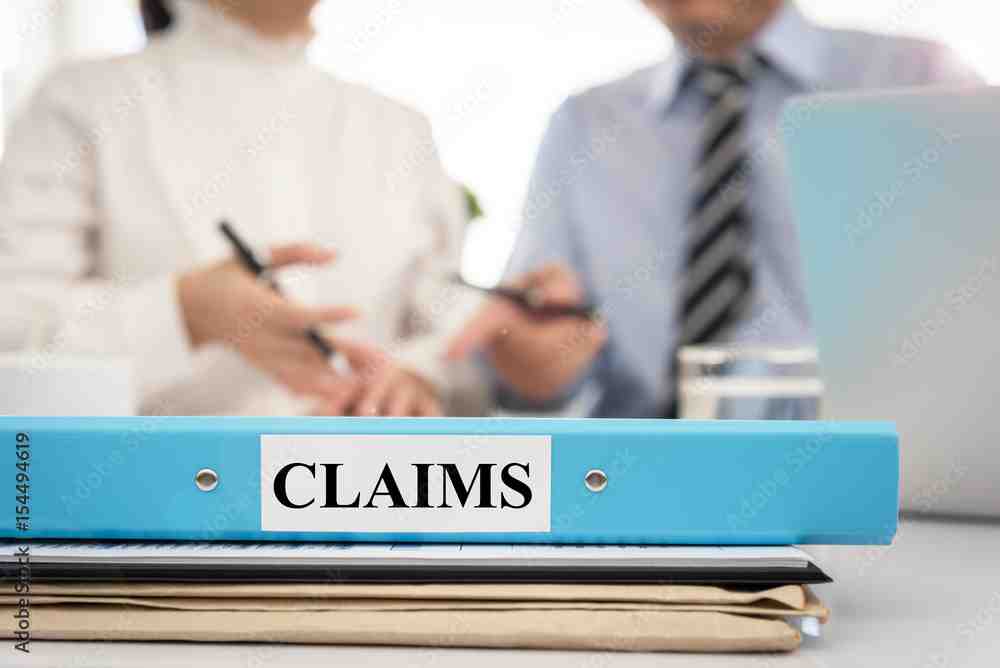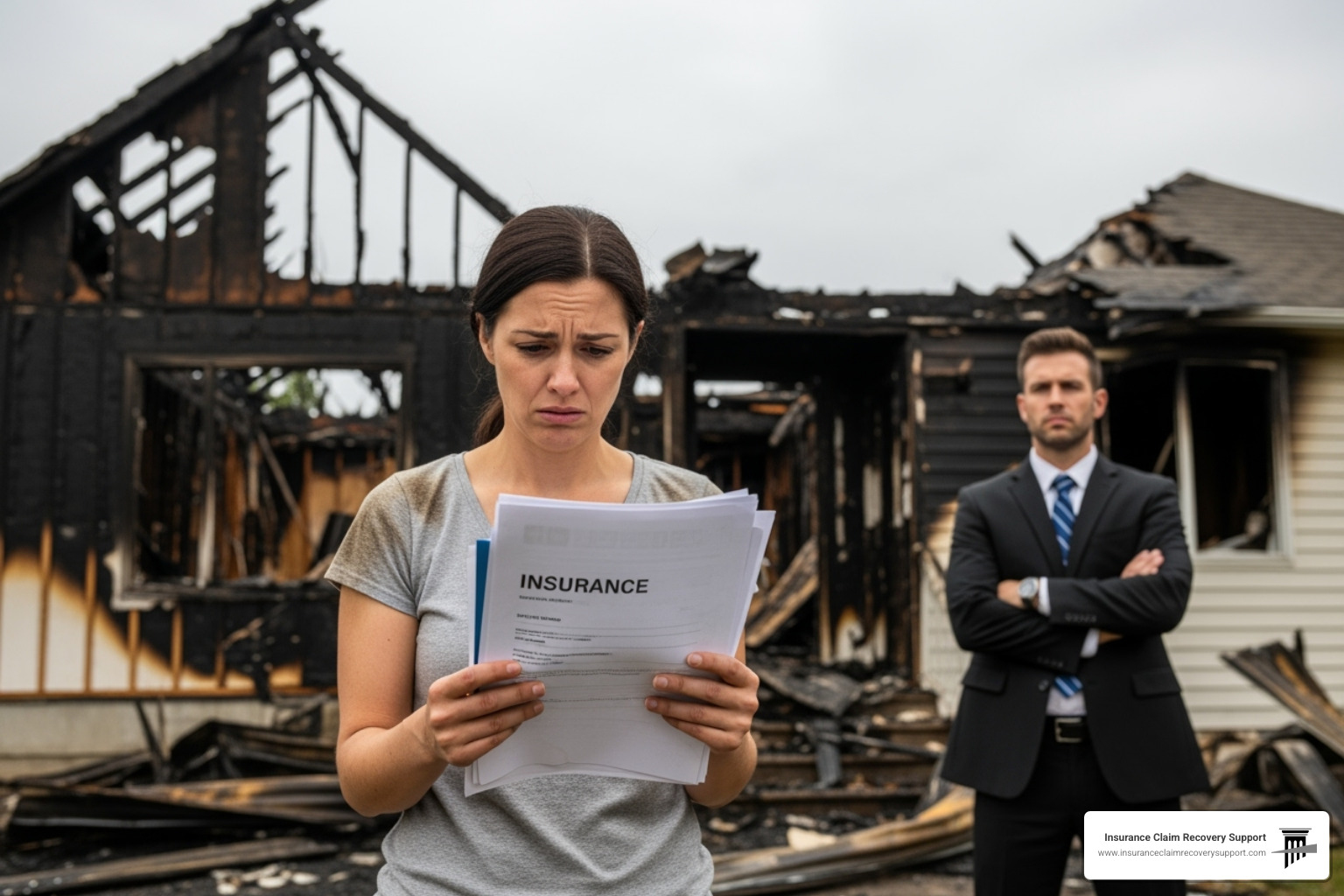Fire mitigation companies due diligence checklist for policyholders is crucial for those looking to effectively evaluate and select the right service provider. Here’s a quick breakdown to help you make an informed decision:
- Verify Fire Mitigation Expertise: Confirm the company has a proven track record in fire mitigation and related services.
- Check Regulatory Compliance: Ensure the company complies with environmental and safety regulations, such as OSHA standards.
- Review Financial Stability: Assess the financial health and stability of the company to guarantee long-term service.
- Evaluate Environmental and Safety Protocols: Look for firms using hygienists to assess mold and asbestos risks following water and fire damage.
In the complex world of risk management, understanding the due diligence process is vital. Conducting thorough due diligence can protect your investments and future, making sure you receive fair coverage. This guide aims to equip you with the necessary insights for selecting the best fire mitigation services.
I’m Scott Friedson, a multi-state licensed public adjuster with experience in evaluating fire mitigation companies due diligence checklist for policyholders. Having settled over $250 million in large loss claims, I have the expertise to guide you through choosing the right fire mitigation service to safeguard your assets effectively.
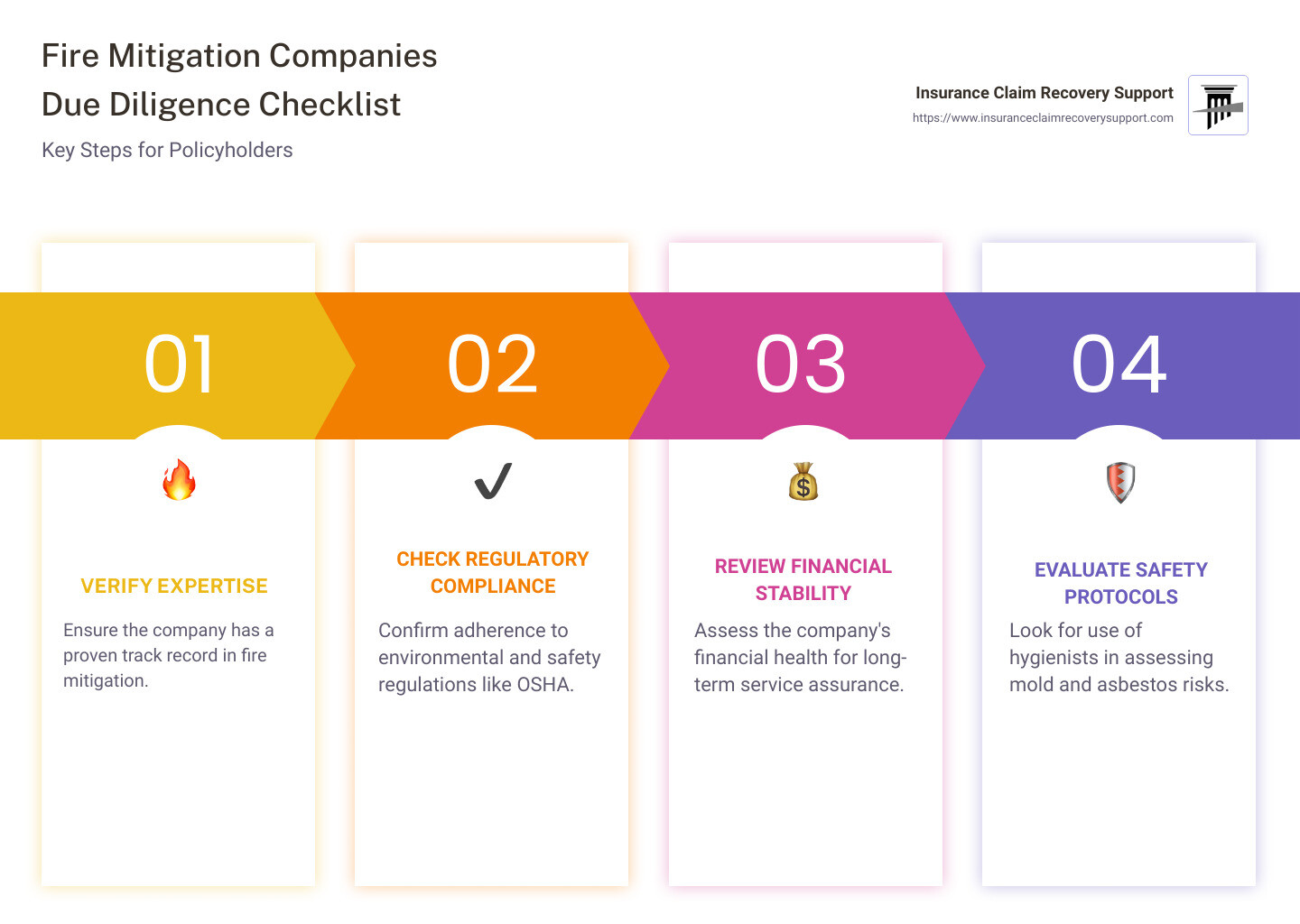
Fire mitigation companies due diligence checklist for policyholders terms to know:
Understanding Fire Mitigation Services
Fire mitigation services play a crucial role in protecting homes and communities from devastating fires. Understanding these services involves grasping the essentials of fire prevention, fire safety, and fire risk assessment. Let’s break these down in simple terms.
Fire Prevention
Fire prevention is all about stopping fires before they start. This involves creating a defensible space around properties, which means clearing away flammable materials like dry leaves and dead trees. Using fire-resistant materials in construction can also greatly reduce the risk of fires. Federal tax credits are sometimes available to help cover these costs, encouraging proactive fire prevention measures.
Fire Safety
Fire safety ensures that if a fire does occur, its impact is minimized. This includes having working smoke alarms, fire extinguishers, and clear emergency escape routes. Regular maintenance and checks of these systems are vital. Fire sprinklers, for instance, need to be inspected to ensure they can effectively control fires when needed.
Fire Risk Assessment
A fire risk assessment identifies potential fire hazards and evaluates existing fire safety measures. This process involves a detailed checklist, like the one offered by Certainty Software. It covers everything from escape routes to emergency lighting. By identifying risks early, steps can be taken to mitigate them, enhancing overall safety.
By understanding these elements, policyholders can better evaluate fire mitigation services. This knowledge helps in making informed decisions and ensures comprehensive protection against fire risks.
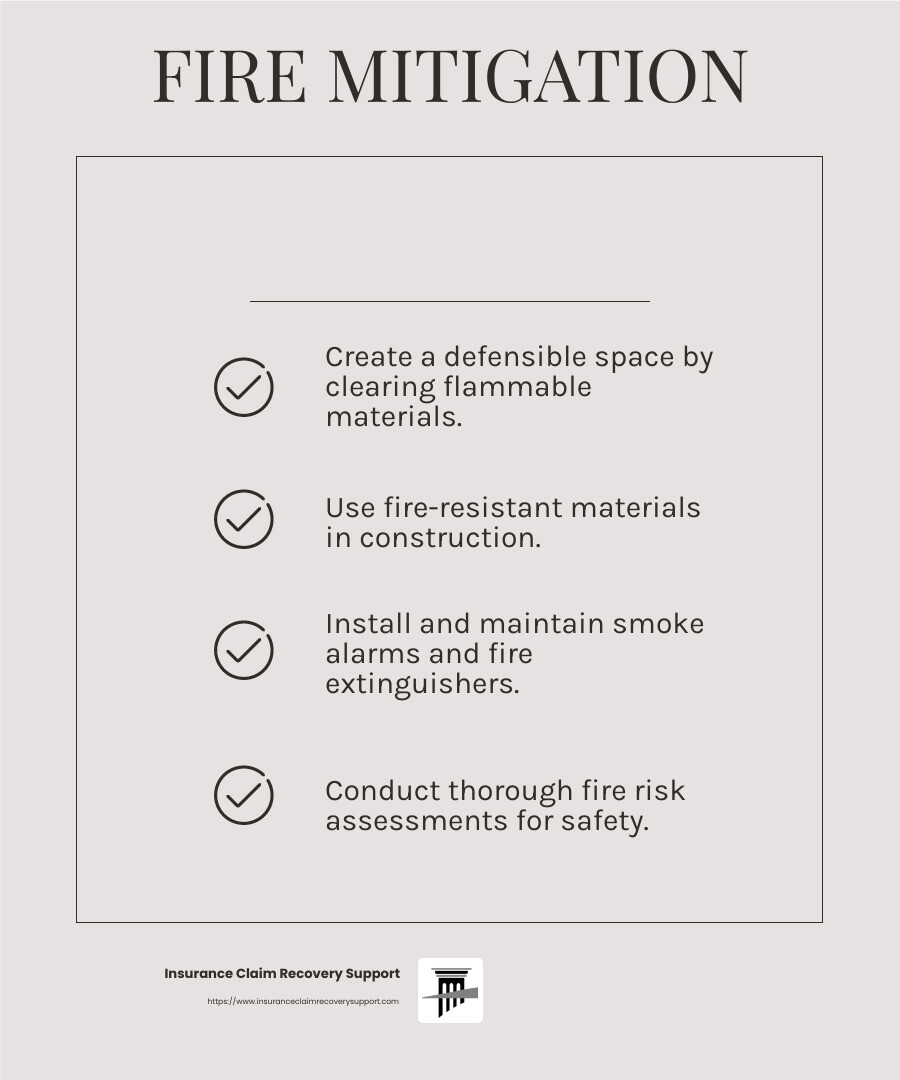
Fire Mitigation Companies Due Diligence Checklist for Policyholders
When evaluating fire mitigation companies, conduct thorough due diligence to ensure your property and interests are well-protected. Here’s a checklist to guide you through the key areas to consider:
Ownership and Organization
- Company Background: Understand who owns the company. Is it a family-owned business, a corporation, or a franchise? Ownership structure can impact decision-making and accountability.
- Management Team: Review the experience and qualifications of the management team. A team with a strong track record in fire mitigation can be a significant advantage.
- Reputation: Check for reviews and ratings from previous clients. A company with a solid reputation is often more reliable.
Assets and Operations
- Equipment and Technology: Does the company use modern, well-maintained equipment? Advanced technology can improve the effectiveness of mitigation efforts.
- Operational Capacity: Assess the company’s ability to handle projects of your size. A company with a large fleet of vehicles or extensive resources might be better suited for larger properties.
- Response Time: How quickly can the company respond in an emergency? Fast response times are crucial during fire incidents.
Financial Stability
- Financial Health: Request financial statements to gauge the company’s stability. A financially sound company is more likely to complete projects on time and without cutting corners.
- Insurance Coverage: Ensure the company has adequate insurance to cover any potential damages during the mitigation process.
- Pricing and Contracts: Compare pricing with competitors to ensure you’re getting a fair deal. Review contracts carefully for hidden fees.
Regulatory Compliance
- Licenses and Certifications: Verify that the company holds all necessary licenses and certifications. Compliance with local laws and regulations is a must.
- OSHA Safety Standards: Ensure the company adheres to OSHA safety standards. This includes having a hygienist on staff for mold remediation and asbestos abatement when necessary.
- Environmental Protocols: Check if the company has protocols for handling environmental hazards. This is especially important for mold and asbestos, which require specific procedures to safely manage.
By following this due diligence checklist, policyholders can make informed decisions when selecting a fire mitigation company. This ensures not only compliance with regulatory standards but also peace of mind knowing that your property is in capable hands.
Evaluating Environmental Hazards and Safety Protocols
When dealing with fire mitigation services, assess how companies handle environmental hazards and follow safety protocols. This ensures not only the safety of your property but also compliance with regulations like OSHA standards.
Environmental Hazards
Fire mitigation companies must be adept at identifying and managing environmental hazards, such as mold and asbestos. Mold can grow after water damage from firefighting efforts, and asbestos might be disturbed during fire damage repairs. Both require specialized handling to prevent health risks.
OSHA Safety Standards
Ensuring that a company adheres to OSHA safety standards is crucial. These standards protect workers and homeowners from potential hazards. A company following OSHA guidelines will have a strong safety culture, reducing the risk of accidents during mitigation efforts.
Hygienist Involvement: A hygienist plays a critical role in assessing and managing health hazards like mold and asbestos. They conduct thorough inspections and ensure that remediation follows safety protocols. Their expertise is invaluable in creating a safe environment post-fire.
Mold Remediation
Mold remediation involves specific protocols to safely remove and prevent mold growth. A company should:
- Use air scrubbers and dehumidifiers to control humidity.
- Seal off affected areas to prevent mold spores from spreading.
- Follow EPA guidelines for mold removal.
Asbestos Abatement
Asbestos abatement is another critical area that requires strict adherence to safety protocols. Companies should:
- Conduct pre-removal assessments by a certified inspector.
- Use containment strategies to prevent fiber release.
- Employ wet methods to minimize airborne fibers during removal.
- Ensure proper disposal of asbestos materials.
Protocol Explanation: In the context of mold remediation and asbestos abatement, a protocol refers to a detailed plan outlining the steps and safety measures to be taken during the removal process. This ensures that all actions comply with health and safety regulations, protecting both the workers and the property occupants.
By evaluating how fire mitigation companies manage these aspects, policyholders can choose a provider that prioritizes safety and environmental responsibility. This not only protects your property but also ensures compliance with legal and health standards.
Creating a Risk Management Plan
When it comes to protecting your property from fire, having a risk management plan is essential. This plan helps you identify potential risks, assess their impact, and develop strategies to mitigate them effectively.
Risk Assessment
The first step in creating a risk management plan is conducting a thorough risk assessment. This involves identifying all possible fire hazards within your property and evaluating their potential impact. Consider factors like:
- Structural vulnerabilities: Are there areas of your building that are more susceptible to fire?
- Nearby hazards: Is your property close to wooded areas or other fire-prone environments?
- Internal risks: Are there flammable materials stored improperly?
By understanding these risks, you can prioritize which areas need immediate attention.
Risk Management
Once you’ve identified the risks, the next step is to manage them. This involves developing a strategy to reduce the likelihood of fire and minimize its potential damage. Key components of a risk management strategy include:
- Regular maintenance checks: Schedule routine inspections to ensure fire alarms, sprinklers, and extinguishers are functional.
- Employee training: Educate staff about fire safety protocols and evacuation procedures.
- Emergency response plan: Develop a clear plan for how to respond if a fire occurs, including evacuation routes and communication strategies.
Mitigation Strategies
Mitigation strategies are actions taken to reduce the severity or likelihood of a fire. These might include:
- Installing fire-resistant materials: Use materials that can withstand high temperatures to protect parts of your building.
- Creating defensible spaces: Clear vegetation and other combustibles from around the property to slow the spread of fire.
- Implementing fire barriers: Use walls and doors that can contain a fire to prevent it from spreading quickly.
These strategies not only help in preventing fires but also in minimizing damage if one does occur.
By following these steps, you can create a comprehensive risk management plan that protects your property and ensures the safety of everyone involved. This proactive approach is a cornerstone of effective fire mitigation, providing peace of mind and reducing potential losses.
Frequently Asked Questions about Fire Mitigation Services
What is a due diligence checklist?
A due diligence checklist is a tool used by policyholders to evaluate fire mitigation companies before hiring them. The checklist helps ensure that the company is reputable, compliant with regulations, and financially stable. Key elements of a due diligence checklist include:
- Ownership and organization: Verify the company’s ownership structure and management team.
- Assets and operations: Assess the company’s equipment and operational capabilities.
- Financial stability: Review financial statements to ensure the company is financially sound.
- Regulatory compliance: Confirm that the company complies with relevant fire safety regulations and standards.
Using a due diligence checklist helps policyholders make informed decisions and choose a reliable fire mitigation service provider.
Why is due diligence important for policyholders?
Due diligence is crucial for policyholders because it reduces the risk of hiring an unreliable or non-compliant fire mitigation company. Conducting a thorough business assessment and reviewing the company’s financial performance can prevent costly mistakes and ensure effective fire mitigation. Key benefits of due diligence include:
- Risk reduction: Identify potential issues before they become problems.
- Financial security: Ensure the company is capable of completing the work without financial difficulties.
- Legal protection: Verify that the company follows all legal requirements, reducing liability risks for policyholders.
By performing due diligence, policyholders can protect their investments and ensure their properties are safeguarded against fire hazards.
What are key questions to ask fire mitigation companies?
When evaluating fire mitigation companies, policyholders should ask several key questions to assess their suitability:
- Company background: How long has the company been in business, and what is their track record with similar projects?
- Legal overview: Are there any past or pending legal issues that could affect the company’s ability to perform the work?
- Financial statements: Can the company provide recent financial statements to demonstrate their financial health and stability?
These questions help policyholders gather critical information about the company’s reputation, legal standing, and financial capability, ensuring they choose a reliable provider for their fire mitigation needs.
Conclusion
At Insurance Claim Recovery Support, we are dedicated to advocating for policyholders, ensuring they receive the maximum settlement they deserve. Our expertise in handling claims related to fire, storm, and other natural disasters across Texas, including cities like Austin, Dallas, and Houston, makes us a trusted partner in navigating the complexities of insurance claims.
Policyholder Advocacy is at the heart of what we do. We understand that dealing with the aftermath of a disaster can be overwhelming. That’s why we stand firmly on the side of policyholders, guiding them through every step of the claims process. Our commitment is to ensure that you are not just another number to your insurance company, but that your claim is given the attention it deserves.
Recent Texas fire and storm damage news highlights the increasing frequency and severity of these events. As a result, policyholders need a reliable partner who can help them steer the intricate claims process. We leverage our deep understanding of the unique challenges posed by Texas’s climate and geography to provide unparalleled support to property owners affected by such disasters.
Through meticulous documentation, expert negotiation, and a comprehensive understanding of insurance policies, we strive to secure the maximum settlement for our clients. Our focus on customer service, combined with our technical expertise, makes us a leading advocate for policyholders across Texas and beyond.
For more information on how Insurance Claim Recovery Support can assist you with your insurance claim, visit our Public Adjuster Services page. Let us be your guide and advocate in securing the settlement you need to move forward.

